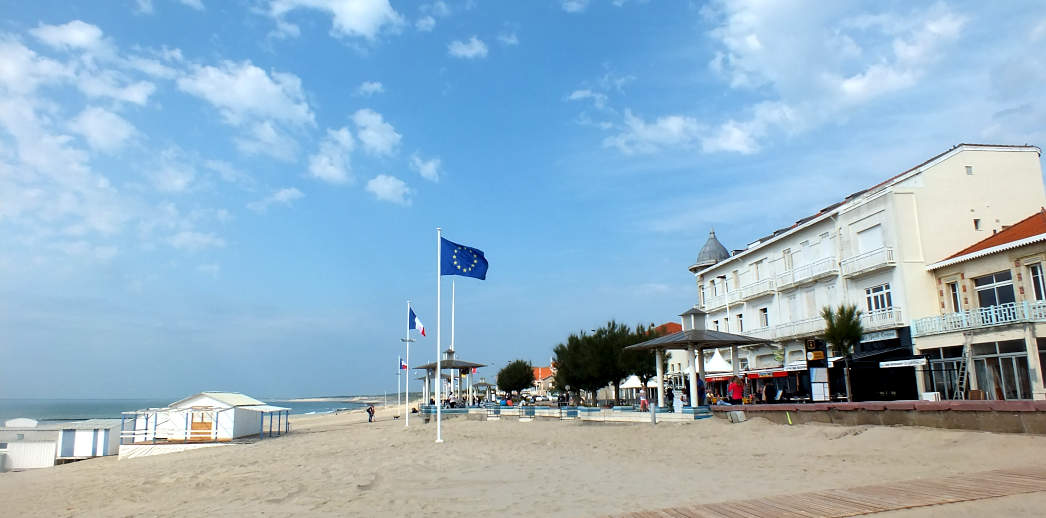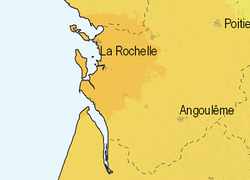 The Vendée -
Charentes - Aquitaine area of France is reputed
as one of
the sunniest parts of France; and within this area, it is the Charentes
Maritime department that benefits from the highest number of annual
hours of sunshine. The capital city of the Charente Maritime, La
Rochelle, enjoys about 2250 hours of sunshine a year (see sunshine map
right), a level that is only exceeded in France by the Mediterranean
coastal strip. To put things in perspective, the sunniest places in
France, such as Aix en Provence, have around 2800 hours of sunshine per
year, and Paris has about 1650 hours - exact figures varying according
to the data source used.
The Vendée -
Charentes - Aquitaine area of France is reputed
as one of
the sunniest parts of France; and within this area, it is the Charentes
Maritime department that benefits from the highest number of annual
hours of sunshine. The capital city of the Charente Maritime, La
Rochelle, enjoys about 2250 hours of sunshine a year (see sunshine map
right), a level that is only exceeded in France by the Mediterranean
coastal strip. To put things in perspective, the sunniest places in
France, such as Aix en Provence, have around 2800 hours of sunshine per
year, and Paris has about 1650 hours - exact figures varying according
to the data source used.The area benefits from mild winters and relatively warm summers. However, as with most coastal areas, temperature fluctuations get greater as one moves inland. Along the coastal strip, frosts are rare and mild in winter - on average only 23 nights per year in La Rochelle - but further inland, particularly getting into the interior of the Charente department, freezing nights are much more common, with an average of 44 frosty nights per year in the north of the Charente department. Snowfalls can occur even on the coast, though snow that settles is a rare event in the Charente Maritime.
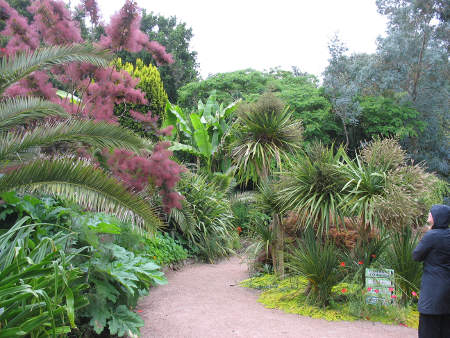 Thanks to the mild climate, many tropical plants
grow luxuriantly in gardens and parks on the west coast.
Thanks to the mild climate, many tropical plants
grow luxuriantly in gardens and parks on the west coast. 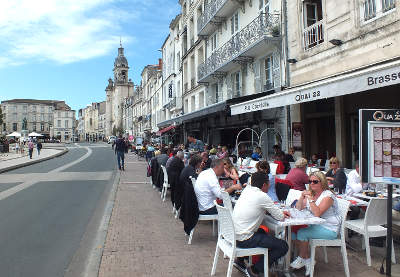
Pavement cafés do good business for much of the year in this sunny region
However, ten to twenty kilometres inland, summer storms are a common feature, and can brew up relatively quickly. The area is also known as the part of France most prone to tornados; and though they are rare, small tornados also occur from time to time - on an average once a year in recent years. That being said, summers in this area are generally dry, sometimes very dry, the occasional storms providing just short sharp periods of heavy rain. Average daily temperatures in the Charente department are in the twenties from June to September, with average daily maxima peaking at under 30° anywhere in the area. This does not mean, of course, that daily temperatures cannot go above 30° in this part of France; they do so regularly, notably inland. For example in Cognac in 2001, annual maximum and minimum temperatures recorded were -10°C and +36.4°C - which is pretty much average for inland parts of the area.
| Index | B&Bs in Dordogne and beyond | West coast gites & cottages |
Photos:
© Gitelink France network except where otherwise stated.
A Gitelink
guide
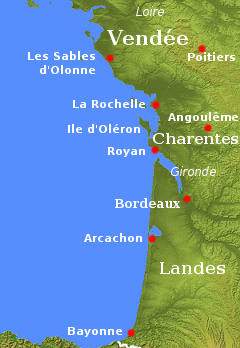

Holiday homes in France
| More regional guides |
| Guide to Provence |
| Guide to the Auvergne |
| Guide to Languedoc-Roussillon |
| Other regions of France |
Copyright Gitelink.com 2003 - 2025 .

